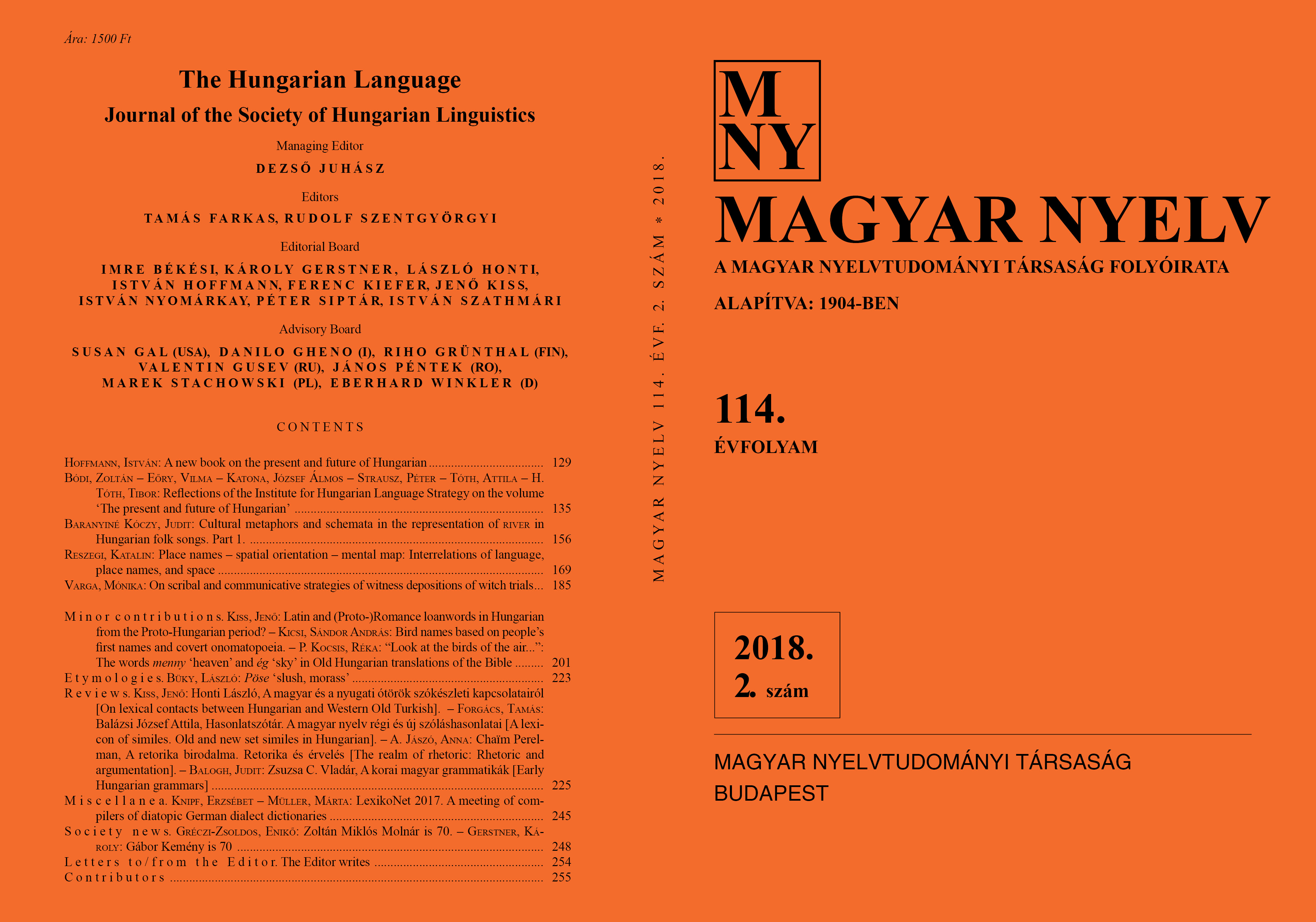On scribal and communicative strategies of witness depositions of witch trials
DOI:
https://doi.org/10.18349/MagyarNyelv.2018.2.185Keywords:
witch trials, 16–18th centuries, witness depositions, principle of uniformity, written and communicative contextAbstract
The present paper explores the written and communicative context of witness depositions in 16–18th century Hungarian witch trials. In particular, it tries to account for the prossibilities and ways of scribes’ interventions. As compared to present-day ways of recording statements in court, the historical material reveals a number of essential differences of principle: what can be most clearly detected is the pursuit of explicitation (in a particular amalgam with reliance on situational/thematic context); less clearly revealed are idealisation of language use and omission of peculiarities of oral discourse. All these are related to the particular legal and cultural embeddedness of witch trials.
Downloads
Published
Issue
Section
License
Copyright (c) 2024 Mónika Varga

This work is licensed under a Creative Commons Attribution-NonCommercial-NoDerivatives 4.0 International License.
Magyar Nyelv is a Diamond Open Access periodical. Documents can be freely downloaded and duplicated in an electronic format, and can be used unchanged and with due reference to the original source. Such use must not serve commercial purposes. In the case of any form of dissemination and use, Hungarian Copyright Act LXXVI/1999 and related laws are to be observed. The electronic version of the journal is subject to the regulations of CC BY-NC-ND (Creative Commons – Attribution-NonCommercial-NoDerivatives).
The journal permits its authors, at no cost and without any temporal limitation, to make pre-print copies of their manuscripts publicly available via email or in their own homepage or that of their institution, or in either closed or free-for-all repositories of their institutions/universities, or other non-profit websites, in the form accepted by the journal editor for publication and even containing amendments on the basis of reviewers’ comments. When the authors publicize their papers in this manner, they have to warn their readers that the manuscript at hand is not the final published version of the work. Once the paper has been published in a printed or online form, the authors are allowed (and advised) to use that (post-print) version for the above purposes. In that case, they have to indicate the exact location and other data of the journal publication. The authors retain the copyright of their papers; however, in the case of an occasional secondary publication, the bibliographical data of the first publication have to be included.



